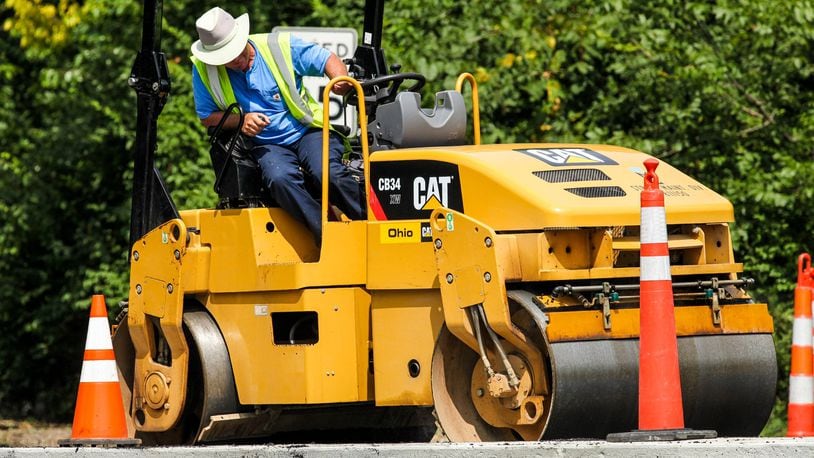At a recent Middletown City Council work-session, City Manager Doug Adkins presented these very preliminary cost estimates and shared other information with council members about how the city could raise additional revenues to fix its streets.
Some of the suggestions made by Adkins included moving the costs of street lighting from the city to property owners as other area communities have done, which would raise about $800,000 a year; placing a 0.25 percent income tax increase that would be dedicated to streets and would generate about $3 million a year; or a property tax increase that would be dedicated for street repairs or improvements. In 2014, one mill of city property tax generated about $620,000, he said.
“We have to get the best bang for the buck,” Adkins said. “It’s going to be a balancing act with scarce resources.”
According to information provided by Scott Tadych, the city’s public works and utilities director, the city maintains 621 lane miles of roads. Of that amount, 333 lane miles or about 54 percent are rated fair to satisfactory, or scored between 56 to 100, according to the 2013 Pavement Condition Index that the city conducted that year, evaluating every street block by block. Tadych said the 2015 PCI survey is expected to be updated later this fall and would provide another snapshot of the city’s street conditions.
There are 174 lane miles or 28 percent that have a PCI of 41 to 55 that are rated poor, while the remaining 113 lane miles or 18 percent have a PCI of 0 to 40 and are rated very poor or failed. Tadych estimated the cost to improve that 46 percent of streets in poor or very poor/failed at $60 million alone.
“This would be a huge undertaking to get caught up,” Tadych said. “The whole goal is to avoid having poor or very poor/failed streets, and we also need money to maintain streets to prevent them from slipping back.”
He said in the first five years of a proposed 20-year plan, the city would spend nearly $860,000 just in preventative maintenance to keep the 114 lane miles or 18 percent of streets to remain in satisfactory condition.
The costs to repair streets range from $1.07 per square yard for crack sealing and minor patching to $33.31 per square yard to fully reconstruct a street with 6.5 inches of asphalt that would also include handicap ramps and spot curb repairs.
Middletown spends an average of about $2.2 million a year for street and road improvements outside of state and federal grants. In 2014, the city spent about $4.2 million, including state and federal grants. Tadych said earlier this year spending about $6 million a year “would be a good start” in alleviating the city’s street and road issues. As in past years, Tadych said the city will continue to leverage local funds with state and federal grants to do the most paving and reconstruction as it can.
Adkins said about 15 percent of the overall costs might be covered through state grants, but the city most likely would still be responsible for local match funding in order to receive a grant. He also said the normal pavement life, depending on the traffic volumes can range from 15 to 25 years.
In 2014, the city tax revenues did better than projected and allowed council to move about $750,000 into a 2015 paving program that was not originally budgeted, enabling several streets to be paved and repaired this year.
Tadych believes there will be a local paving program in the 2016 budget along with two other major project being undertaken using state and federal funds: a $970,000 repaving of Ohio 4 between Girard Street and Tytus Avenue of which the city is paying about $495,000; and the total reconstruction, widening and new water lines along Oxford State Road from Yankee Road to Spurling Way, a nearly $6 million project that includes $3.85 million in federal and state funding. In 2017, the city will be widening and repairing Yankee Road between Oxford State Road and Lafayette Avenue.
Councilman Dan Picard said the city has many side streets “that are really bad.”
“The bottom line is that we need more revenues,” he said. “I’m to the point of putting it out there to the voters.”
About the Author
